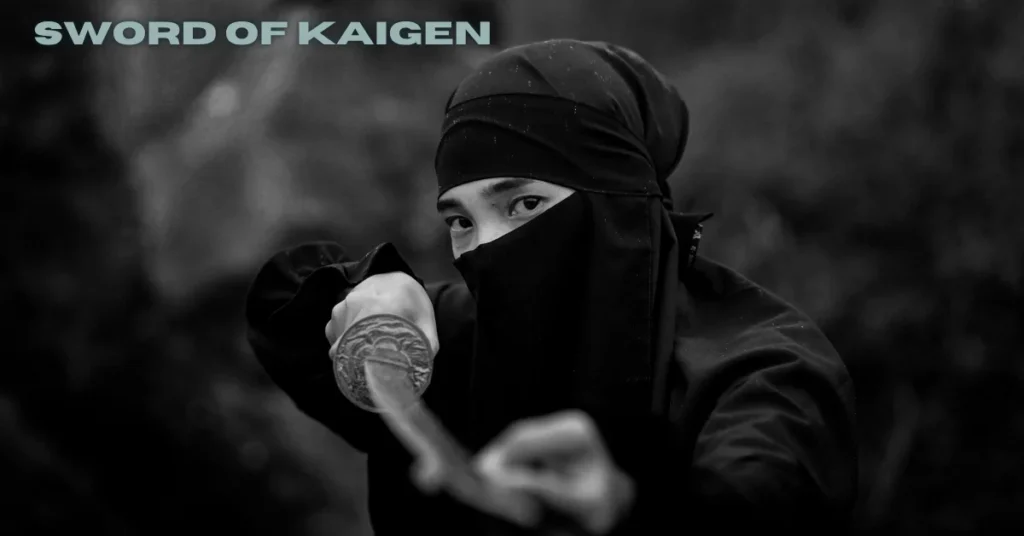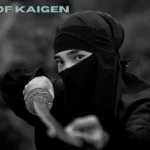Introduction to Sword of Kaigen and author M.L. Wang
In a world where fantasy often dances with hope and heroism, M.L. Wang’s *Sword of Kaigen* dives deep into the shadows of human emotion and conflict. This gripping tale takes readers on a relentless journey through a realm filled with intricate magic and stark realities. With its rich narrative woven against the backdrop of war-torn landscapes, this novel has quickly gained traction among avid readers.
If you haven’t yet discovered *Sword of Kaigen*, you’re in for an experience that shatters traditional tropes associated with fantasy literature. Prepare to encounter characters who grapple with their moral dilemmas amidst chaos, alongside elements that challenge your perceptions about duty, honor, and sacrifice. Ready yourself for an unforgettable adventure—one that deserves a place on every bookshelf dedicated to grimdark tales!
Overview of the grimdark genre in literature
Grimdark is a subgenre that thrives on moral ambiguity and bleak settings. It strips away the notion of heroes with clear intentions, replacing them with flawed characters who often make questionable choices.
Often set in dystopian worlds, grimdark literature focuses on the darker aspects of human nature. Readers are introduced to relentless conflict and power struggles where survival comes at a steep cost.
This genre doesn’t shy away from exploring themes like betrayal, revenge, and the consequences of ambition. Characters face harrowing dilemmas, leaving readers questioning their motives as they navigate treacherous landscapes.
While fantasy elements may still exist—think magic or mythical creatures—the tone remains starkly realistic. This blend creates an immersive experience where hope feels elusive but tantalizing enough to pursue amid chaos.
How Sword of Kaigen stands out in the genre
Sword of Kaigen distinguishes itself in the grimdark genre through its rich cultural backdrop and intricate world-building. M.
L. Wang crafts a setting that feels both familiar and fresh, rooted in an Asian-inspired mythology that breathes life into her narrative.
The novel’s characters are not mere archetypes; they wrestle with deep moral dilemmas. Their complexities add layers to the story, revealing vulnerabilities even amid brutal circumstances.
Moreover, the emotional stakes are high. Readers feel every loss profoundly as loved ones fall victim to war and betrayal. It’s this heart-wrenching realism that keeps audiences invested from start to finish.
Wang also plays with traditional fantasy elements, twisting them in unexpected ways while staying true to grimdark roots. This blend makes Sword of Kaigen an essential read for fans seeking something unique within a well-trodden landscape.
Themes and elements explored in the novel
Sword of Kaigen delves deep into the complexities of family dynamics. The relationships portrayed are raw and poignant, revealing how loyalty can be both a blessing and a burden.
The theme of sacrifice resonates throughout the narrative. Characters face harrowing choices that test their limits. These sacrifices often come at personal costs, reflecting the harsh realities of life in a world rife with conflict.
Another significant element is the exploration of duty versus desire. Characters grapple with societal expectations while yearning for personal freedom. This tension adds layers to their motivations and decisions.
Additionally, Wang intricately weaves themes of cultural heritage and identity into her storytelling. Readers witness characters navigating their sense of belonging amid tumultuous events, enriching the emotional landscape.
Magic serves as both an empowering force and a source of peril, illustrating its dual nature within this grimdark setting.
Critical reception and awards received by the book
Sword of Kaigen has garnered significant acclaim since its release. Readers and critics alike have praised M.
L. Wang’s masterful storytelling and intricate world-building.
The book quickly became a favorite in online communities, often appearing on must-read lists for fantasy enthusiasts. It’s not just the plot that captivates; readers are drawn to its rich character development and emotional depth.
Awards also reflect the novel’s impact. Sword of Kaigen received nominations from various literary circles, solidifying its status as an essential read within the grimdark genre. Its recognition highlights how it resonates with fans seeking more than traditional tropes in fantasy literature.
Book bloggers rave about its ability to challenge expectations while delivering thrilling action sequences. This combination keeps discussions lively among fans who appreciate both complexity and excitement in their reads. The dialogue sparked by this novel continues to grow, showcasing its lasting influence on the genre landscape.
Impact on readers and discussion of fan theories
Sword of Kaigen has sparked a vibrant community among readers. Fans dive deep into its intricate world, sharing theories and analyzing character motivations. The book’s multifaceted nature invites discussions about the moral dilemmas faced by its protagonists.
Many readers resonate with the protagonist’s struggles, leading to personal reflections on their own lives. This emotional connection fuels passionate debates online, where fans speculate about future developments in M.
L. Wang’s universe.
Social media platforms buzz with fan art and creative interpretations of key scenes. Some even craft elaborate timelines linking events within the story to broader themes like honor and sacrifice.
The novel inspires not just admiration but also critical thinking as readers dissect its layered narrative. Each theory adds richness to the experience, creating a tapestry woven from shared love for this grimdark tale. The impact is clear: Sword of Kaigen isn’t just read; it’s lived by those who embrace it fully.
Why Sword of Kaigen is a must-read for fans of grimdark and fantasy genres
For fans of grimdark and fantasy, “Sword of Kaigen” is a refreshing breath of air. M.L. Wang weaves intricate layers into the narrative, balancing heart-wrenching moments with high-stakes action.
The world-building is rich and immersive. Readers are transported to a realm where honor clashes with brutality, creating an atmosphere filled with tension.
Character development shines throughout the novel. The protagonists face not just external challenges but internal demons as well. This duality resonates deeply, making them relatable and complex.
Moreover, the themes explored in this tale—family loyalty, sacrifice, and societal pressure—strike a chord in today’s world. Each page invites reflection on what it means to fight for one’s beliefs.
Ultimately, “Sword of Kaigen” isn’t merely another fantasy read; it’s an experience that lingers long after you’ve turned the final page.
Conclusion
Sword of Kaigen is not just another entry into the grimdark genre; it’s a vivid tapestry woven with rich characters and complex themes. M.L. Wang has crafted an intricate world that challenges conventional notions of heroism and morality. Readers are drawn into a narrative filled with emotional depth, political intrigue, and personal sacrifice.
The book resonates on multiple levels, making it more than just a tale of conflict. It explores family dynamics, cultural identity, and the harsh realities of war. The protagonist’s journey encapsulates struggles that feel both unique yet universally relatable.
Critical acclaim only adds to its allure, as fans dissect every layer through discussions and theories online. The community around Sword of Kaigen continues to grow—a testament to its powerful storytelling and engaging prose.
For anyone who appreciates gritty narratives wrapped in fantasy elements or those looking for something fresh within the genre, Sword of Kaigen deserves a spot on your reading list. Dive into this compelling work; you won’t regret experiencing all that M.L. Wang has to offer in her stunning novel.






